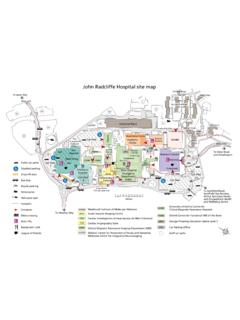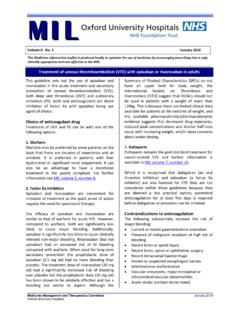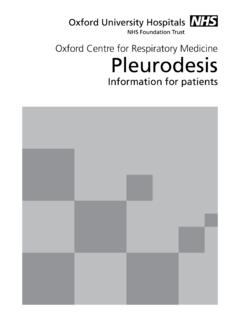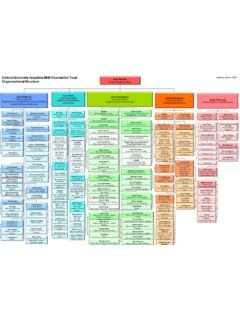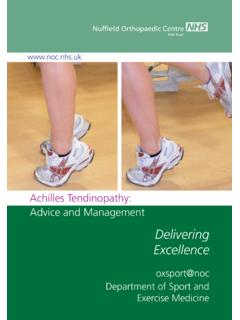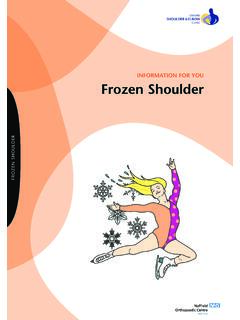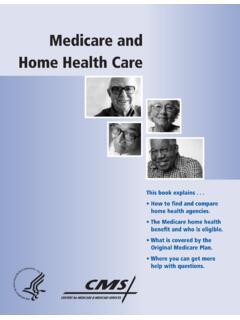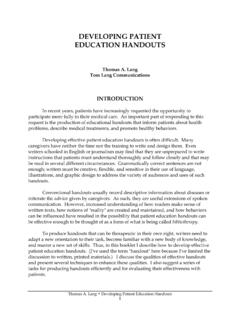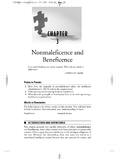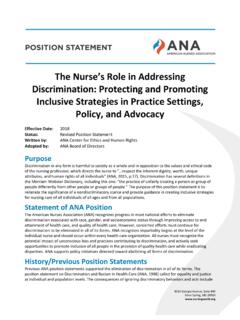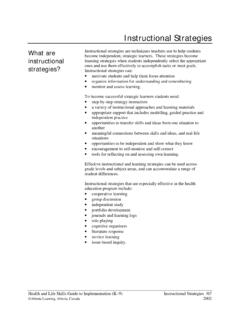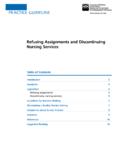Transcription of Plantar Fasciitis
1 Plantar FasciitisAdvice and management Information for patientsOxSport Department of Sport and Exercise MedicinePage 2 This booklet has been written to help guide you through the management of your Plantar Fasciitis . It is important that you read this booklet, so you have a better understanding of the condition and its is Plantar Fasciitis ? Plantar Fasciitis is a painful condition of the foot caused by repetitive strain to the Plantar fascia. This is a fibrous band of soft tissue connecting your heel bone to your toes. It helps to reinforce the arch of your foot and acts like a bow string to stiffen your foot when you walk.
2 Metatarsal bonesPlantar fasciaHeel boneAchillestendonPage 3 How common is Plantar Fasciitis ? Plantar Fasciitis is a relatively common condition that affects approximately 1 in every 10 adults. Both athletes and non-athletes can suffer with this condition. It tends to be more common in people whose occupations involve standing on hard surfaces for long periods, and those who carry out sporting activities, such as long distance are the risk factors for developing Plantar Fasciitis ?Many things affect the load being put through your Plantar fascia.
3 Plantar Fasciitis is not simply the result of exercising or standing or walking too much. General risks include: Age: it is more common between the age of 40 and 60 years Gender: it is more common in women than men Weight: you have a higher risk if you are overweight Diabetes: people with diabetes are more likely to get Plantar Fasciitis Flexibility: reduced ankle movement can increase the risk Foot type: it is more common in people with high arched feet Footwear: old or poor quality footwear can also increase the risk.
4 Page 4 What are the symptoms of Plantar Fasciitis ?The most common symptoms are:Variable pain: Pain is felt around the heel bone, usually on the sole of the foot. People often complain of first step pain, when they first get up. You may find this pain settles during the day and with exercise, but is worse at the end of the day or after a lot of activity. Some people experience severe pain from their Plantar fascia, which stops them doing their sport and may cause a stiffness: Many people complain of stiffness around the heel bone, particularly when they first get up.
5 This usually eases after a few minutes of walking, but may last : Often the underside of the heel is tender when pressed. Sometimes this is quite general, but usually there is one particularly tender and scansIt is often not necessary to carry out imaging (X-rays or scans) to be able to diagnose Plantar Fasciitis ; it can usually be confirmed by your doctor or physiotherapist using your medical history and imaging is necessary, we are likely to use an ultrasound scan. This is a handheld probe, which is rolled over your skin above your Plantar fascia.
6 The ultrasound machine uses sound waves to create an image on a screen. This is a quick, safe and effective way of us being able to see your Plantar fascia. Magnetic Resonance Imaging (MRI) is also sometimes an X-ray may show a heel spur, which is a small piece of bone that can grow on the underside of the heel bone, near the Plantar fascia. This can be mistaken as the cause of Plantar Fasciitis . We know that approximately 3 in every 10 people have a heel spur and few of them have heel pain. Similarly, many people with Plantar Fasciitis do not have a heel spur.
7 Page 5 Treatment optionsIce:Applying ice wrapped in a damp tea towel to the affected area helps reduce pain. Apply for a maximum of 20 minutes, 4 times a day, or after exercise. Please take care not to apply ice for too long or directly to the skin, as this can cause ice burns. Do not apply ice/ice packs to an area where you have numbness, decreased sensation or poor painkillers:A short course of paracetamol or anti-inflammatories (such as ibuprofen) for a few days can be helpful. Anti-inflammatories should be taken with rest:You can help to maintain your fitness using different forms of exercise that do not significantly aggravate your symptoms, such as swimming, cycling, aqua jogging (running in water).
8 Try to adjust your work pattern to break up long periods of standing or being on your exercises: Stretching the Plantar fascia (see page 7) Rolling of the Plantar fascia (see page 9)Footwear:We recommend supportive footwear with a stiff outer sole and a shock absorbing insole. Wear footwear that has arch supports and cushioning for your heel. Avoid walking in bare feet or flip flops. Maintain your shoes in good condition and renew your trainers every 300 to 500 miles. Consider having two pairs of trainers on the go at the same time if you are a 6 Managing your weight:If you are overweight, see your GP to discuss strategies to help you lose weight.
9 This can make a big difference to your Plantar Fasciitis and general training:Vary your exercise in different ways, to train other parts of your body. This is called cross training and is a valuable method of reducing injury and keeping are some examples of cross training that you may find useful: Swimming Rowing Alternative sport Spin classes Weight training Cycling Pilates Aerobics Gym equipment CircuitsPhysiotherapy:This may involve several different treatment options including: manual techniques specific treatments:If initial treatments do not improve your symptoms, your physiotherapist or doctor will discuss other options with you.
10 These may include: podiatry referral for assessment for shoe inserts night splints to stop your Plantar fascia tightening up overnight capsaicin cream dry needling, with or without autologous blood injection (a procedure to try and stimulate healing in the tendon) extracorporeal shockwave therapy (a machine is used to deliver sound waves to the painful area, to stimulate healing) latest evidence suggests that steroid injections are not the best treatment option. There is a risk of the Plantar fascia rupturing (tearing) following a steroid injection, and it may cause wasting of the fat pad cushion under your heel.
